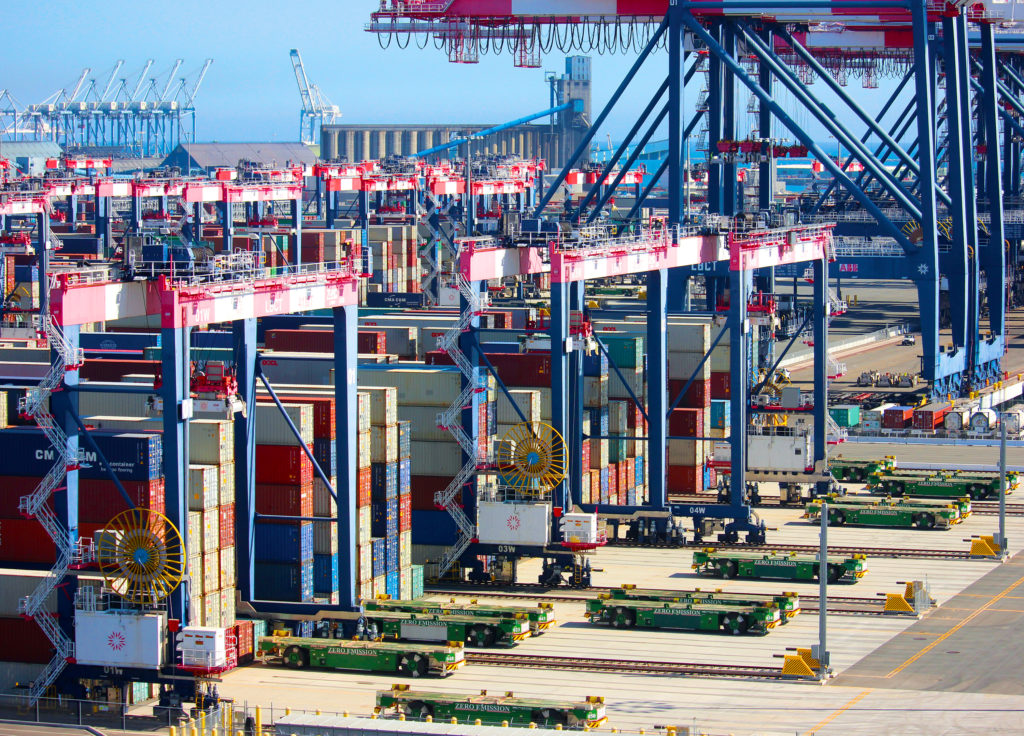The debate around automation at California ports has come to the shores of Long Beach. The Long Beach City Council recently approved a recommendation by 9th District Councilmember Rex Richardson to conduct a study assessing the economic impact of automation at the Port of Long Beach. The item received unanimous approval from Richardson’s seven fellow councilmembers. The study will be produced by the city manager’s office in collaboration with the harbor department, and is due to be presented to the city council within 120 days.
“As this automation conversation is advancing, we want to make sure that we fully understand what the implications are to our local Long Beach economy,” Richardson told the Business Journal. “Long Beach is a working-class town. It’s always been a working-class town, from the naval base to the port,” he added. “One in five jobs in our city is connected to the port, so if there’s a perceived threat to jobs and economic activity, we need to understand it.”

The issue of automation has received increased attention in the region in recent months. At the Port of Los Angeles, a permit application seeking to add charging stations for automated equipment to the APM Terminal sparked an outcry by local unions. The decision by the Los Angeles Board of Harbor Commissioners to approve the permit was reviewed by the Los Angeles City Council, but a final decision by the harbor commission in early July upheld the initial approval.
While the permit was eventually approved, the process resulted in a heightened focus on automation at the San Pedro Bay ports, which has been met with political action by local representatives. Upon request by Los Angeles County Supervisor Janice Hahn, the L.A. County Board of Supervisors ordered a study on the impact of automation at the Port of Los Angeles. The motion was approved by the board on June 25, and staff was directed to return with a report within 90 days. The Port of L.A. and the Port of Long Beach each currently feature one terminal that has undergone large-scale automation, the TraPac terminal in Los Angeles and Long Beach Container Terminal.
Mike Gipson, the Compton-based state assemblymember representing the 64th District, proposed a bill that – in its initial form – would have given the State Lands Commission the authority to approve or deny applications for automation projects at California ports. The bill has since been gutted and the delegation of authority to the commission was replaced by a directive to conduct a series of meetings “at or near California ports that operate on granted public trust lands to consider the impacts of automated technology at California’s ports.” The bill has been approved by the state assembly and is scheduled for a hearing in front of the senate appropriations committee on August 30.
When Richardson initially recommended a discussion on automation to the city council to take place on August 13, the proposed agenda item included a formal show of support for Gipson’s legislation, Assembly Bill (AB) 1321. The item was withdrawn and when it returned to the city council’s agenda the following week, any reference to AB 1321 had been removed.
“I want to place my focus, as chair of the economic development committee [of the council], on the economic impact to our city. I think that’s what people are most concerned about,” Richardson said of his decision to remove any discussion on AB 1321 from the agenda. “The mayor has already taken a position there, so it really would have been symbolic.” In a July 9 letter to Senate Natural Resources and Water Committee Chair Henry Stern, Mayor Robert Garcia expressed his support for the bill, if it was amended to remove the State Lands Commission’s authority over future automation projects and instead maintained local harbor commissions jurisdiction.
“With 175 shipping lines connecting Long Beach to 217 seaports, the Port handles $194 billion in trade annually, supporting hundreds of thousands of Southern California jobs, all under the direction of the Long Beach Harbor Commission,” Garcia wrote in his letter. “I am confident that the Port of Long Beach will continue to be one of the primary economic drivers and job generators of our regional economy, and that AB 1321 if amended to maintain the Long Beach Harbor Commission’s jurisdiction, will provide tools to leverage new technologies to support trade and our local workforce.”
In similar letters to Stern, the Pacific Merchant Shipping Association, the Pacific Maritime Association and the California Chamber of Commerce had expressed their concerns about the bill’s initial directive. The case-by-case approval process through the State Lands Commission, they argued, would impede California ports’ ability to compete globally and to meet ambitious goals for emissions reduction and energy efficiency set by the state.
It’s important for the port to remain competitive, Richardson noted, but the successes need to be felt by local residents. “A city can’t be prosperous unless individuals are connected to our economic prosperity and they also are prosperous,” Richardson said. “We love to see a thriving port that’s breaking records in terms of cargo [volume], setting emissions standards, those are things that we always measure when it comes to the port. But we need to also make sure that we’re measuring [success by] the local jobs that we are providing.”
Following the city council’s vote to order a study on the economic impact of automation, Port of Long Beach Executive Director Mario Cordero issued the following statement: “The city council has considered the matter and directed staff to develop a report on the issue. We stand ready to assist and facilitate that process in any way that we can. In the meantime, we remain focused on day-to-day operational excellence, as we are committed to making the port an even stronger economic engine for the city, state and the U.S.”
City staff are expected to present the results of their study to the city council by December 18, 2019.
